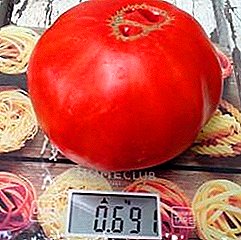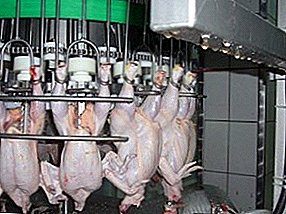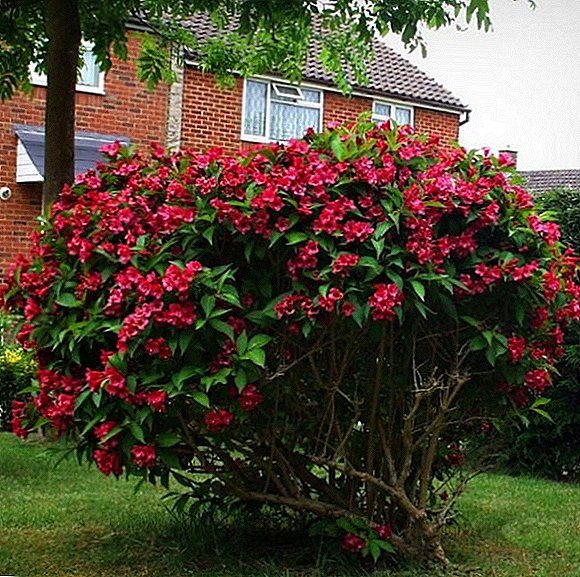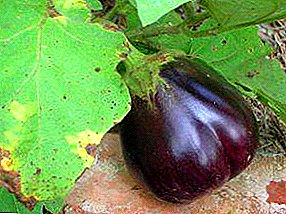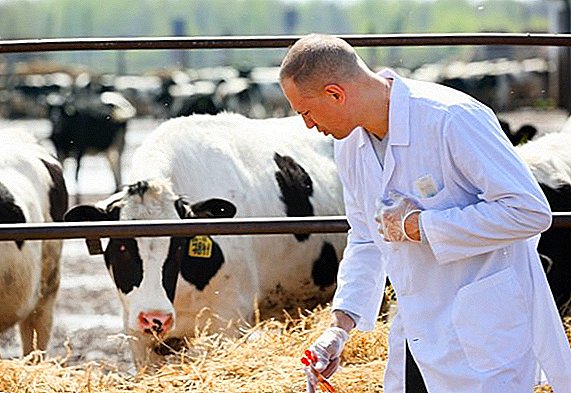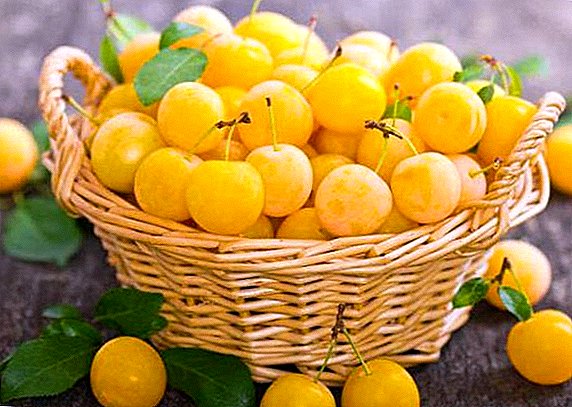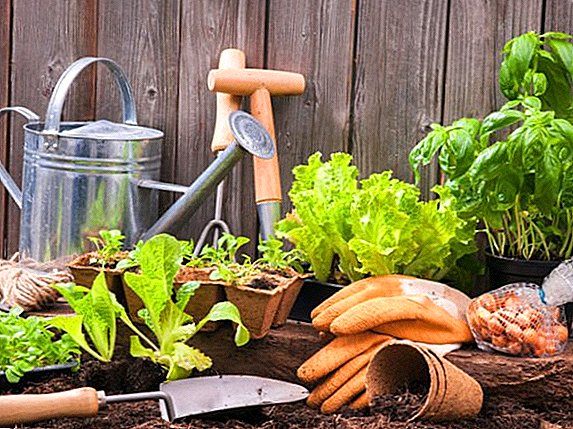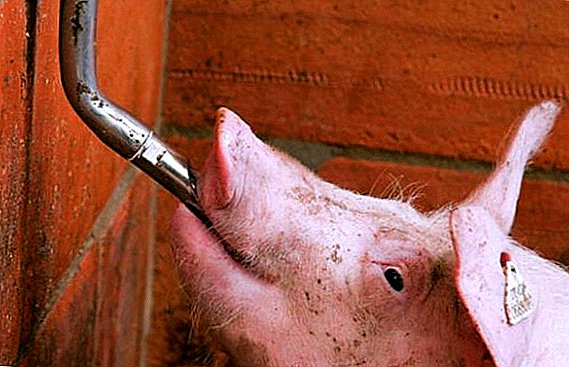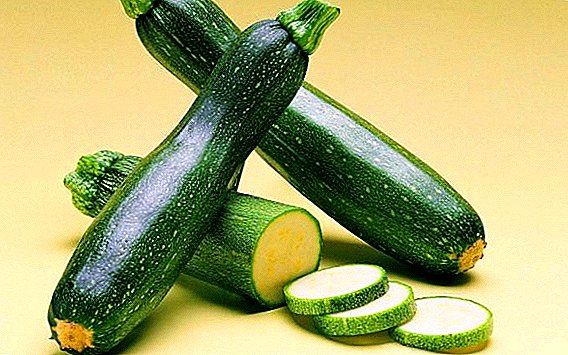 Zucchini It is very appreciated in cooking for its delicate taste and dietary qualities. It is used to prepare not only stews and the well-known caviar, but even sweet jam. This vegetable has long taken root in many suburban areas. Squashes are quite simple in planting and caring in the open field, they can be grown both from seeds and through seedlings. We will discuss the nuances of the latter method further.
Zucchini It is very appreciated in cooking for its delicate taste and dietary qualities. It is used to prepare not only stews and the well-known caviar, but even sweet jam. This vegetable has long taken root in many suburban areas. Squashes are quite simple in planting and caring in the open field, they can be grown both from seeds and through seedlings. We will discuss the nuances of the latter method further.
Growing zucchini through seedlings
Growing zucchini seedlings method has many advantages. The method is suitable for areas with cool and short summer and provides an earlier harvest.
When to plant zucchini for seedlings
 The exact time when sowing squash for seedlings is optimal, depends on the climatic conditions of the region. It may be April or May. Seeds are sown a month before they are planted in open ground. If you plan to grow vegetables in a greenhouse or under cover, the seedlings need to be planted 15 days earlier.
The exact time when sowing squash for seedlings is optimal, depends on the climatic conditions of the region. It may be April or May. Seeds are sown a month before they are planted in open ground. If you plan to grow vegetables in a greenhouse or under cover, the seedlings need to be planted 15 days earlier.
Presowing seed treatment
Fruitful and more resistant to disease zucchini grown from 2-3-year-old seeds. First of all, the seeds must be carefully inspected and removed unsuitable for planting. Store seeds of zucchini are most often already prepared, and no additional steps will be needed for any treatment. Often these seeds are colored. Homemade seeds or purchased with hands must be processed.
For the prevention of fungal diseases, the seeds are kept in hot water (48-50 degrees) for about 5 hours, after which they are immediately dipped into cold water for several minutes. Often used 20-minute treatment in a solution of potassium permanganate with further washing with cold water. Seeds can be heated in the sun for several days or treated with aloe and kalanchoe juices in a ratio of 1: 1. Also for seed treatment, you can use the drug "Fitosporin-M". Processing is carried out for 8-18 hours at room temperature.
Did you know? Homeland squash - America. Zucchini came to Europe in the XVI century and was originally a decorative culture. Later, his taste is still appreciated. Zucchini is often used in Mediterranean cuisine. In combination with tomatoes and eggplants prepare the classic ratatouille dish.
Soil for seedlings
The optimal soil for planting squash on seedlings should have a neutral or slightly alkaline reaction. Well suited to the mixture in this proportion: 5 parts of peat land, 2 parts of humus and sod land, 1 part sawdust. If the substrate is too acidic, you can add chalk or ash to it. An excellent option will also be store ready mix for vegetable seedlings. On sale you can find special soils for pumpkin crops.
The procedure for sowing seeds for seedlings
 Before sowing, seed seeds should be soaked before swelling. Swollen seeds can be stored in the refrigerator. If they germinate, they will sprout faster, but it must be borne in mind that the seedlings of the zucchini are very thin, they must be treated very carefully and sown such seeds immediately. Finished treated seeds should be wrapped in a damp cloth and plastic bag, put in a warm place and provide ventilation, ventilated several times a day. The fabric should not dry out or be too wet.
Before sowing, seed seeds should be soaked before swelling. Swollen seeds can be stored in the refrigerator. If they germinate, they will sprout faster, but it must be borne in mind that the seedlings of the zucchini are very thin, they must be treated very carefully and sown such seeds immediately. Finished treated seeds should be wrapped in a damp cloth and plastic bag, put in a warm place and provide ventilation, ventilated several times a day. The fabric should not dry out or be too wet.
It is very important not to injure the root system of zucchini when moving a seedling into the soil, therefore it is best to sow the seeds in cups or peat pots. Two-thirds capacity is filled with soil mixture, moistened with warm water and sown zucchini seeds to a depth of 2-3 cm. If there is no confidence in the high germination of seeds, it is better to put two seeds in the recess. Capacity should be covered with glass or film.
Important! Peat pots - a biologically pure disposable container for seedlings. Seedlings can be planted in open ground directly in the pot, which later naturally decomposes.
Conditions before germination of zucchini seeds
Seedlings of zucchini can be kept in the greenhouse, on the loggia or on the windowsill. Before the emergence of sprouts, it is necessary to maintain the temperature at 18-24 ° C and water it with warm water once a week.
Care for seedlings zucchini
 With the advent of germs, the containers need to be freed from the coating and transferred to a light in a cooler room (balcony or loggia) with a temperature of 15-18 ° C during the day and at least 13-15 ° C at night. Before landing on the site, the temperature for the zucchini seedlings should be in the range of 17-22 ° C during the day and 13-17 ° C at night. To sprouts develop normally, the seedlings need to provide good lighting, which can be increased with the help of a screen made of foil and cardboard. It must be placed so that the reflected sunlight falls on the shoots. If the air in the house is too dry, a damp cloth should be placed on the nearest radiator. With the emergence of a third leaf seedlings, a soil mixture should be gradually added to form a strong root system in the tank.
With the advent of germs, the containers need to be freed from the coating and transferred to a light in a cooler room (balcony or loggia) with a temperature of 15-18 ° C during the day and at least 13-15 ° C at night. Before landing on the site, the temperature for the zucchini seedlings should be in the range of 17-22 ° C during the day and 13-17 ° C at night. To sprouts develop normally, the seedlings need to provide good lighting, which can be increased with the help of a screen made of foil and cardboard. It must be placed so that the reflected sunlight falls on the shoots. If the air in the house is too dry, a damp cloth should be placed on the nearest radiator. With the emergence of a third leaf seedlings, a soil mixture should be gradually added to form a strong root system in the tank.
A week after the emergence of sprouts, the first dressing is done with a solution of superphosphate and carbamide (0.5 tablespoons per 1 liter of water) or the finished “Bud” top dressing. After 10 days, fertilized a second time with a solution of a liter of water, ash and nitrophoska (0.5 tablespoons).
During the cultivation of seedlings zucchini watering make settled water at room temperature. For watering 8 pots need a liter of water.
Important! In order to lengthen the harvest period of the Zelentsi, the seedling method must be combined with the sowing of seeds.
Planting zucchini seedlings on the site
At the age of 25-30 days, seedlings can be transplanted to the site.
When planting zucchini seedlings in open ground
 When the average daily temperature is 15 degrees, you can plant the seedlings of zucchini in open ground. Sprouts are ready for planting if they have several dark green leaves, the root system is well developed and covers the entire volume of the reservoir, and the roots are white and intact.
When the average daily temperature is 15 degrees, you can plant the seedlings of zucchini in open ground. Sprouts are ready for planting if they have several dark green leaves, the root system is well developed and covers the entire volume of the reservoir, and the roots are white and intact.
Choosing a place for zucchini
For cultivation of zucchini in open ground, it is recommended to choose a sunny, sheltered from the wind place with a low groundwater table. Zucchini love fertile soil with lots of humus.
Preparatory work
PApproximately 2 weeks before planting the plot, the soil needs to be dug up to the depth of a shovel and fertilizer applied: a humus or compost bucket, a bucket of rotted sawdust, 2 tablespoons of superphosphate, 2 glasses of wood ash, a tablespoon of urea and a tablespoon of potassium sulfate per square meter . For reasons of economy, fertilizer can be applied directly to the wells. They need to be mixed with the soil, pour the bed with hot water and cover with foil before transplanting. A week before disembarking in the afternoon, pots of seedlings are brought out into the street to be tempered.
Good and bad predecessors
It is better not to plant squash again in the same place where they or other pumpkin crops (cucumbers, squash, squash) grew last year. In this case, the vegetable will not be able to please the high yield and risks succumbing to the diseases typical for pumpkin.
 Good predecessors for zucchini are early and cauliflower, potatoes, carrots, tomatoes, radishes, onions, parsley, lettuce, garlic, green mans. The last plants are grown for green manure, they enrich the soil with nitrogen and trace elements, inhibit the growth of weeds. These plants are legumes and cereals, calendula, sunflower, mustard and others.
Good predecessors for zucchini are early and cauliflower, potatoes, carrots, tomatoes, radishes, onions, parsley, lettuce, garlic, green mans. The last plants are grown for green manure, they enrich the soil with nitrogen and trace elements, inhibit the growth of weeds. These plants are legumes and cereals, calendula, sunflower, mustard and others.
How to plant seedlings in open ground
The distance between the beds for zucchini should reach 1-1.5 m. For each square meter of the site should be no more than three plants zucchini.
It is recommended to plant zucchini in open ground in warm cloudy weather. In each hole before planting you need to put a little humus and ash and moisten with warm water. Peat pot or sprout with a lump of earth is dipped into the hole to the cotyledon leaves, add soil and tamp.
If there is a threat of frost, sprouts should be covered with plastic bottles or polyethylene. To do this, set up arches of wire above the beds and stretch the film.
Did you know? In Italy and France (in particular, in Provence) stuffed zucchini flowers are a popular dish. For food use male flowers that can not create fruit. They are eaten raw or fried in batter, like cheese, pickled cucumbers, anchovies.
Seasonal care for squash on the site
Zucchini - quite unpretentious in the care of a vegetable. Like any plant, it needs watering, loosening the soil and weeding, feeding. Even with minimal care, he can please a good harvest of fruits.
How to conduct watering
 Watering squash in the open ground is produced mainly in the evening under the root of water heated in the sun. During the heat zucchini should be watered daily. When the plants grow enough and the leaves close the soil, watering can be done every few days in hot weather and after 5-6 days in overcast. If the leaves become lethargic from the heat, the plants are watered with a nozzle with small holes. Squash growing in the greenhouse, need less watering than plants in open ground. Excess moisture can cause rotting of the fruit.
Watering squash in the open ground is produced mainly in the evening under the root of water heated in the sun. During the heat zucchini should be watered daily. When the plants grow enough and the leaves close the soil, watering can be done every few days in hot weather and after 5-6 days in overcast. If the leaves become lethargic from the heat, the plants are watered with a nozzle with small holes. Squash growing in the greenhouse, need less watering than plants in open ground. Excess moisture can cause rotting of the fruit.
Loosening and weeding between rows
Loose soil better passes water and heat, which is important for the growth of zucchini. In a drought, the soil tends to harden, forming a crust, so it must be loosened. It is convenient to combine loosening with weeding.
How to feed zucchini
Organic fertilizers for feeding zucchini in the open field can be used purchased or prepared by yourself.
Weeds after weeding or mowing need to be collected and placed in a barrel to the very top, pour water there and stir occasionally. A week later, the contents of the barrel must be filtered and diluted with water in a ratio of 1: 8. Next, herbal infusion watered zucchini, trying not to spill it on the leaves and stems. Do it two weeks after landing in open ground. Repeated feeding done a week after the first.  It is possible to alternate such top dressing with manure fertilizer. Manure must be diluted with water in the ratio of 1:10, insist on sun for several days and water. When zucchini will ovary, fertilizing do the third time. To do this, prepare fertilizer from 10 liters of herbal infusion or slurry, a glass of sifted wood ash and a tablespoon of double superphosphate. Before fertilizer is recommended to water the area.
It is possible to alternate such top dressing with manure fertilizer. Manure must be diluted with water in the ratio of 1:10, insist on sun for several days and water. When zucchini will ovary, fertilizing do the third time. To do this, prepare fertilizer from 10 liters of herbal infusion or slurry, a glass of sifted wood ash and a tablespoon of double superphosphate. Before fertilizer is recommended to water the area.
Processing (protection) of zucchini from pests and diseases
HThe necessary care measure is to protect squash from pests and diseases. For the prevention of fungal diseases, one week after planting, it is recommended to treat with a one-percent solution of Bordeaux mixture or copper oxychloride, and against pests - Karbofos. In the autumn, after stripping the plot, the soil must be deeply dug up and prepared for another crop.
 To combat melon aphids, plants are treated three times with soapy water (300 g of soap, dishwashing detergent for 10 liters of water) at weekly intervals. Whitefly needs to be washed off the leaves with water and loosen the soil around the plant to a depth of 2 cm. If such methods against pests do not help, use insecticidal preparations.
To combat melon aphids, plants are treated three times with soapy water (300 g of soap, dishwashing detergent for 10 liters of water) at weekly intervals. Whitefly needs to be washed off the leaves with water and loosen the soil around the plant to a depth of 2 cm. If such methods against pests do not help, use insecticidal preparations.
Slugs need to be collected manually, if there are a lot of them, they make baits from tanks with dark beer. Zucchini can be affected by many diseases. At the first signs of powdery mildew, the treatment of the area with a 10% solution of fungicides ("Topsin", "Bayleton") should be done, and if necessary, it should be repeated after two weeks.
When black mold or white rot (sclerotinia) appear, the affected plants should be removed and burned; after harvesting, the area is completely clean of plant residues. Bacteriosis is controlled by treatment with Bordeaux liquid (1%).
 With improper care (planting in cold soil, irrigation with cold water, excessive feeding) zucchini may appear root rot. For its elimination, it is necessary to remove unfavorable factors and process the courgettes with drugs containing copper. In hot rainy weather, zucchini is sometimes affected by anthracnose, which can be controlled by treating with Bordeaux liquor (1%) or dusting with ground sulfur (15-30 g per 10 m² of planting).
With improper care (planting in cold soil, irrigation with cold water, excessive feeding) zucchini may appear root rot. For its elimination, it is necessary to remove unfavorable factors and process the courgettes with drugs containing copper. In hot rainy weather, zucchini is sometimes affected by anthracnose, which can be controlled by treating with Bordeaux liquor (1%) or dusting with ground sulfur (15-30 g per 10 m² of planting).
Collection and storage of zucchini
The first harvest of zucchini can be obtained within one and a half to two months after disembarkation. Under good conditions, one plant can give 15-20 fruits. It is desirable to collect them every other day so that they do not outgrow and new ovaries form.
Did you know? A very unusual and interesting zucchini dish is spaghetti. For its preparation, the zucchini must be rubbed on a special grater for carrots in Korean. Eat vegetable spaghetti lightly stewed in tomato sauce and even raw.
 The optimal fruit of the zucchini for food has a thickness of 5-7 cm and a length of 15-20 cm. These are unripe Zelentsi with soft skin and small seeds. They are fried, stewed, pickled, eaten raw (for example, in salads). Young immature fruits have already become traditional ingredients in diet and raw food.
The optimal fruit of the zucchini for food has a thickness of 5-7 cm and a length of 15-20 cm. These are unripe Zelentsi with soft skin and small seeds. They are fried, stewed, pickled, eaten raw (for example, in salads). Young immature fruits have already become traditional ingredients in diet and raw food.
For long-term storage only ripe zucchini is suitable: their skin is hard enough, and if you knock on it, you can hear a dull sound. It is not necessary to wait for the full maturity of the fruit, because with proper assembly they can ripen indoors. Green zucchini for direct use can be plucked at the base, but neatly cut long stalk is important for storage. If the zucchini is simply picked, the “tail” will begin to rot and spoil the fruits themselves in the future. Cut the stalk need a knife or shears.
Important! Slightly overripe and large zucchini can be used to prepare squash caviar. It is not scary if the fruit will have a rough skin and hard seeds.
 Young fruits can be stored at a low temperature for no more than two weeks. Ripe zucchini in dry and cool rooms with good ventilation can be stored for up to 5 months. They need to be folded in a box or box so that the fruits do not touch each other, and fill the space between them with straw or pine sawdust. Also zucchini can be stored in the refrigerator in the lower compartment for vegetables.
Young fruits can be stored at a low temperature for no more than two weeks. Ripe zucchini in dry and cool rooms with good ventilation can be stored for up to 5 months. They need to be folded in a box or box so that the fruits do not touch each other, and fill the space between them with straw or pine sawdust. Also zucchini can be stored in the refrigerator in the lower compartment for vegetables.
Growing zucchini in the open field does not require special costs. Certain agricultural knowledge and some efforts will allow to get a big crop of vegetables for your table or even for sale, because zucchini is a highly profitable culture for the agricultural business.


